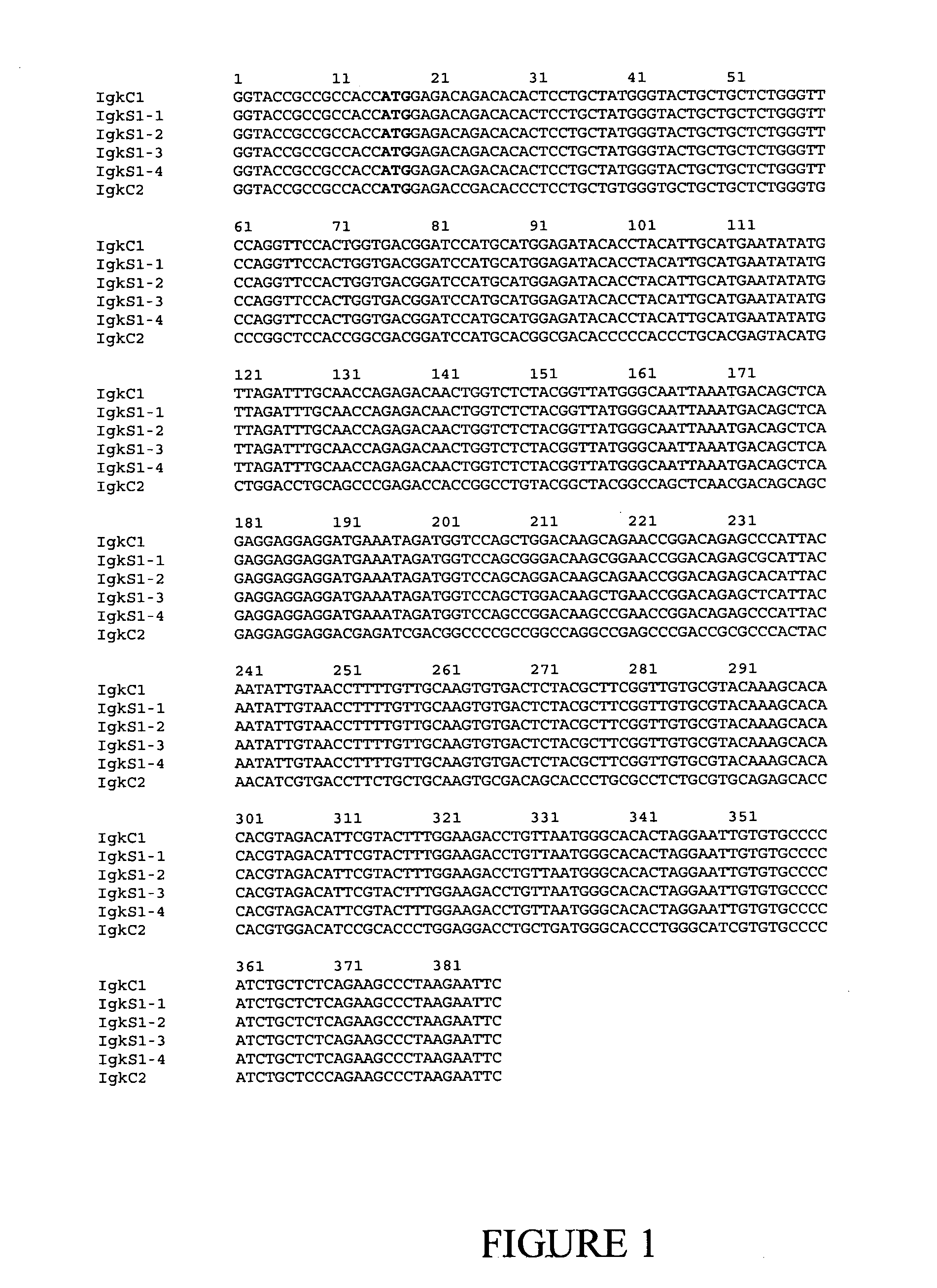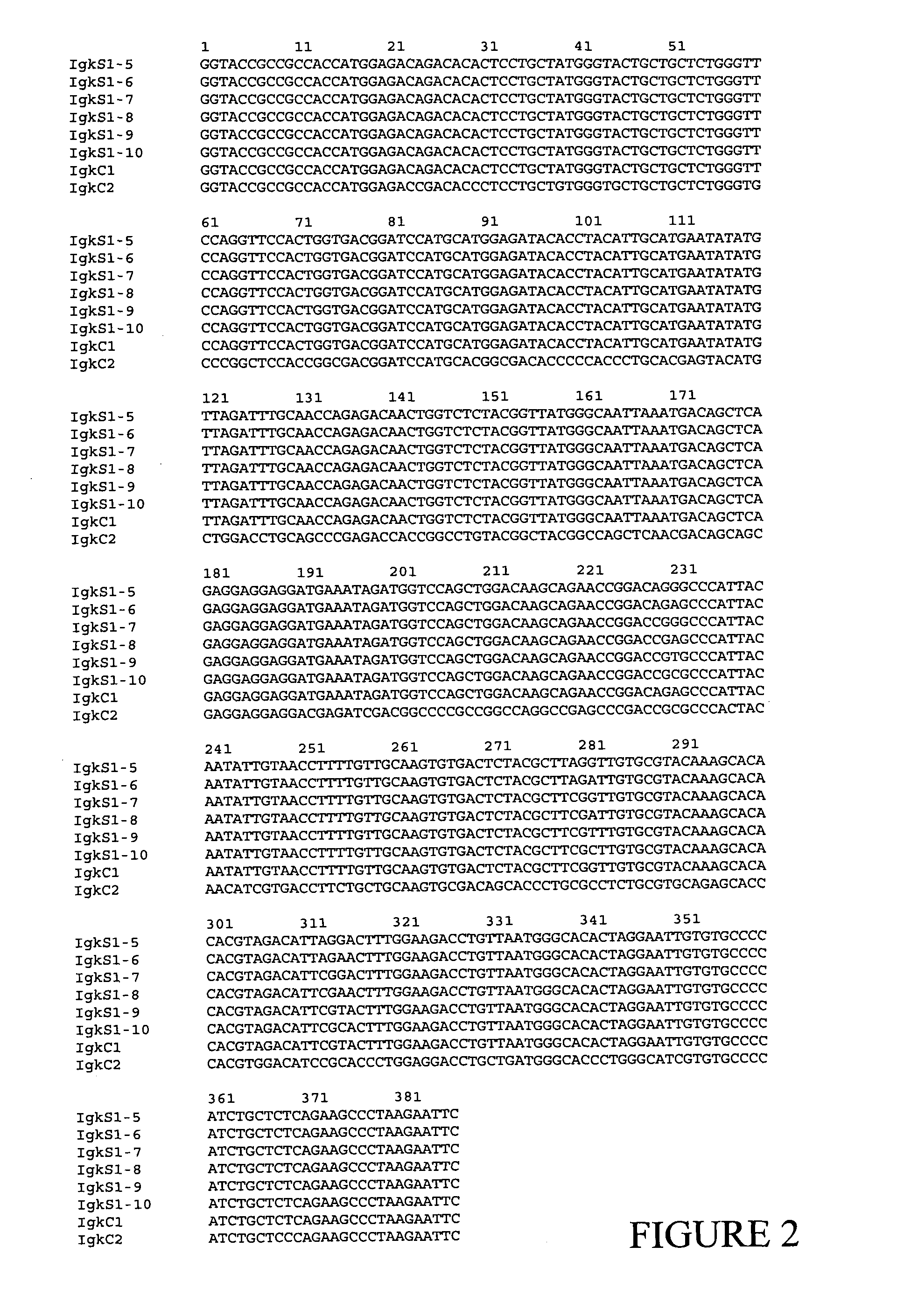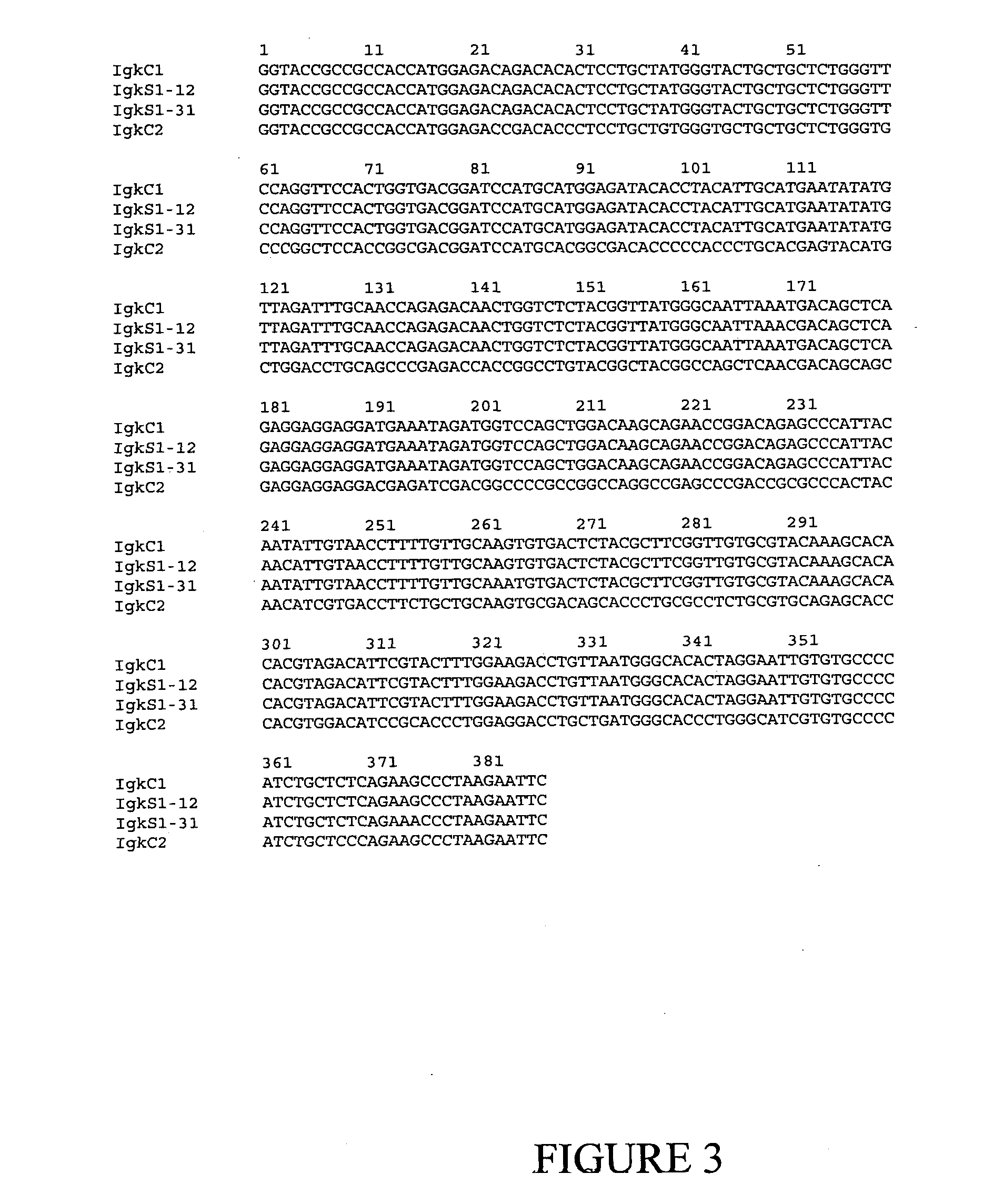Expression system for modulating an immune response
- Summary
- Abstract
- Description
- Claims
- Application Information
AI Technical Summary
Benefits of technology
Problems solved by technology
Method used
Image
Examples
example 1
Synthetic Construct System for Determining the Immune Response Preference of Codons in Mammals
Materials and Methods
Primer Design / Synthesis and Sequence Manipulation
[0169]Oligonucleotides for site-directed mutagenesis were designed according to the guidelines included in the mutagenesis kit manuals (Quikchange II Site-directed Mutagenesis kit or Quikchange Multi Site-directed Mutagenesis Kit; Stratagene, La Jolla Calif.). These primers were synthesized and PAGE purified by Sigma (formerly Proligo).
[0170]Oligonucleotides for whole gene synthesis were designed by eye and synthesized by Sigma (formerly Proligo). The primers were supplied as standard desalted oligos. No additional purification of the oligonucleotides was carried out.
[0171]Sequence manipulation and analysis was carried out using the suite of programs on Biomanager (ANGIS) and various other web-based programs including BLAST at NCBI (http: / / www.ncbi.nlm.nih.cov / blast / bl2seq / wblast2.cgi), NEBcutter V2.0 from New England Bio...
example 2
Construction of Codon Modified Influenza A Virus (H5N1) HA DNA for Conferring an Enhanced Immune Response to H5N1 HA
[0228]The wild-type nucleotide sequence of the influenza A virus, HA gene for hemagglutinin (A / Hong Kong / 213 / 03(H5N1), MDCK isolate, embryonated chicken egg isolate) is shown in SEQ ID NO: 50 and encodes the amino acid sequence shown in SEQ ID NO: 51. Several codons within that sequence were mutated using the method described in Example 1. Specifically, the method involved replacing codons of the wild type nucleotide sequence with corresponding synonymous codons having higher immune response preferences than the codons they replaced, as represented in Table 1. An illustrative codon modified nucleotide sequence comprising high immune response preference codons is shown in SEQ ID NO: 52.
example 3
Construction of Codon Modified Influenza A Virus (H3N1) DNA for Conferring an Enhanced Immune Response to H3N1 HA
[0229]The wild-type nucleotide sequence of the influenza A virus, HA gene for hemagglutinin (A / swine / Korea / PZ72-1 / 2006(H3N1)) is shown in SEQ ID NO: 53 and encodes the amino acid sequence shown in SEQ ID NO: 54. Specifically, the method involved replacing codons of the wild type nucleotide sequence with corresponding synonymous codons having higher immune response preferences than the codons they replaced, as represented in Table 1. An illustrative codon modified nucleotide sequence comprising high immune response preference codons is shown in SEQ ID NO: 55.
PUM
| Property | Measurement | Unit |
|---|---|---|
| Immunogenicity | aaaaa | aaaaa |
Abstract
Description
Claims
Application Information
 Login to View More
Login to View More - R&D
- Intellectual Property
- Life Sciences
- Materials
- Tech Scout
- Unparalleled Data Quality
- Higher Quality Content
- 60% Fewer Hallucinations
Browse by: Latest US Patents, China's latest patents, Technical Efficacy Thesaurus, Application Domain, Technology Topic, Popular Technical Reports.
© 2025 PatSnap. All rights reserved.Legal|Privacy policy|Modern Slavery Act Transparency Statement|Sitemap|About US| Contact US: help@patsnap.com



